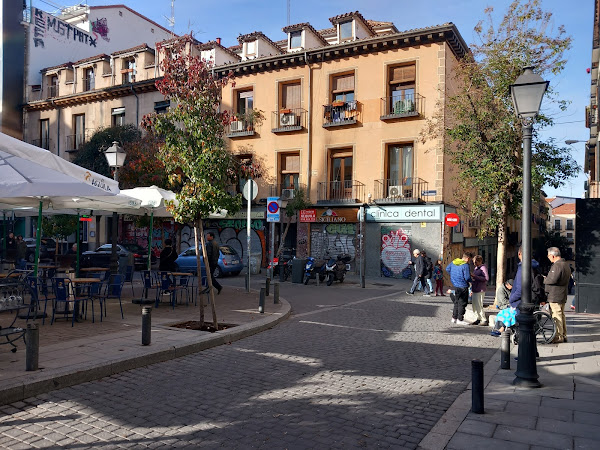National Library
On Thursday evening it was off to the Biblioteca Nacionál -- the national library of Spain. Housed in the 18th-centry edifice you can see above, with statues guarding the entrance, the institution houses the literary patrimony of Spain.
They're very big here, at least in Madrid, on the "patrimony" of the nation -- the inherited wealth of culture and nature that people have now to enjoy and conserve. It seems a little bit stuffy, and I'm sure young people don't have much reverence for it, but it does seem to be unifying value for the country, and we all know now what it feels like to be in a country without unifying values.
Unfortunately, for tourists and citizen alike, 98% of the library isn't open to the hoi polloi. That's how seriously they protect its treasures. Anna told me that several years ago someone had stolen a first edition of "Don Quixote," an event that was like 9/11 for the librarians. Afterwards security got very tight. (Nevertheless, we were told that on Oct. 12, the national day, they throw the library open to everyone and you can troop through it. I hope to take advantage of that opportunity.)
But we were allowed to enter a gallery space that contained an exhibition about Clara Campoamor, a lawyer who was instrumental in getting Spanish women the right to vote. This occurred in 1931. Later, she broke with leftists -- she was anever a socialist -- on the question of legalization of prostituion. Then when the civil war began in 1936, she fled the country and became an exile. But even Franco could not overturn the right to vote for women.
The exhibit was almost overdone, with so many artifacts of early 20th century Spain to give context to the suffrage movement that I found it hard to take in. I did love the poster art though. Propaganda posters were very important in Spain at that time to communicate political and social messages and urge people -- millions of whom were illiterate -- to support a movement one way or another. The poster below shows a woman casting a ballot.
Afterwards we went for drinks across the street in a park-like setting, with dozens of tables under pine trees and a central bar that was very tourn-of-the-century. Everything in Madrid ends with going out for drinks, thus the hundreds and hundreds of bars, bistros, and cafes.





